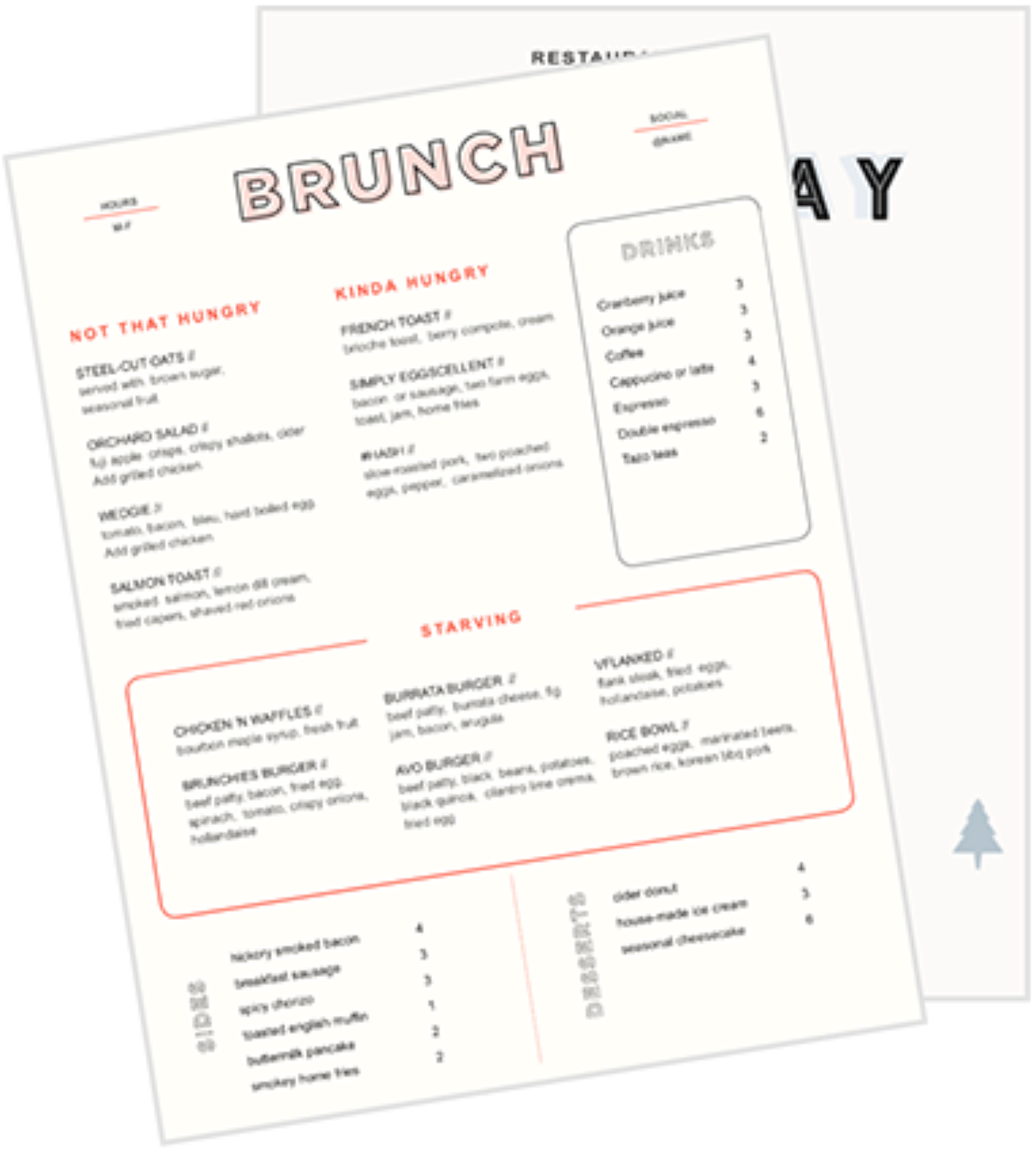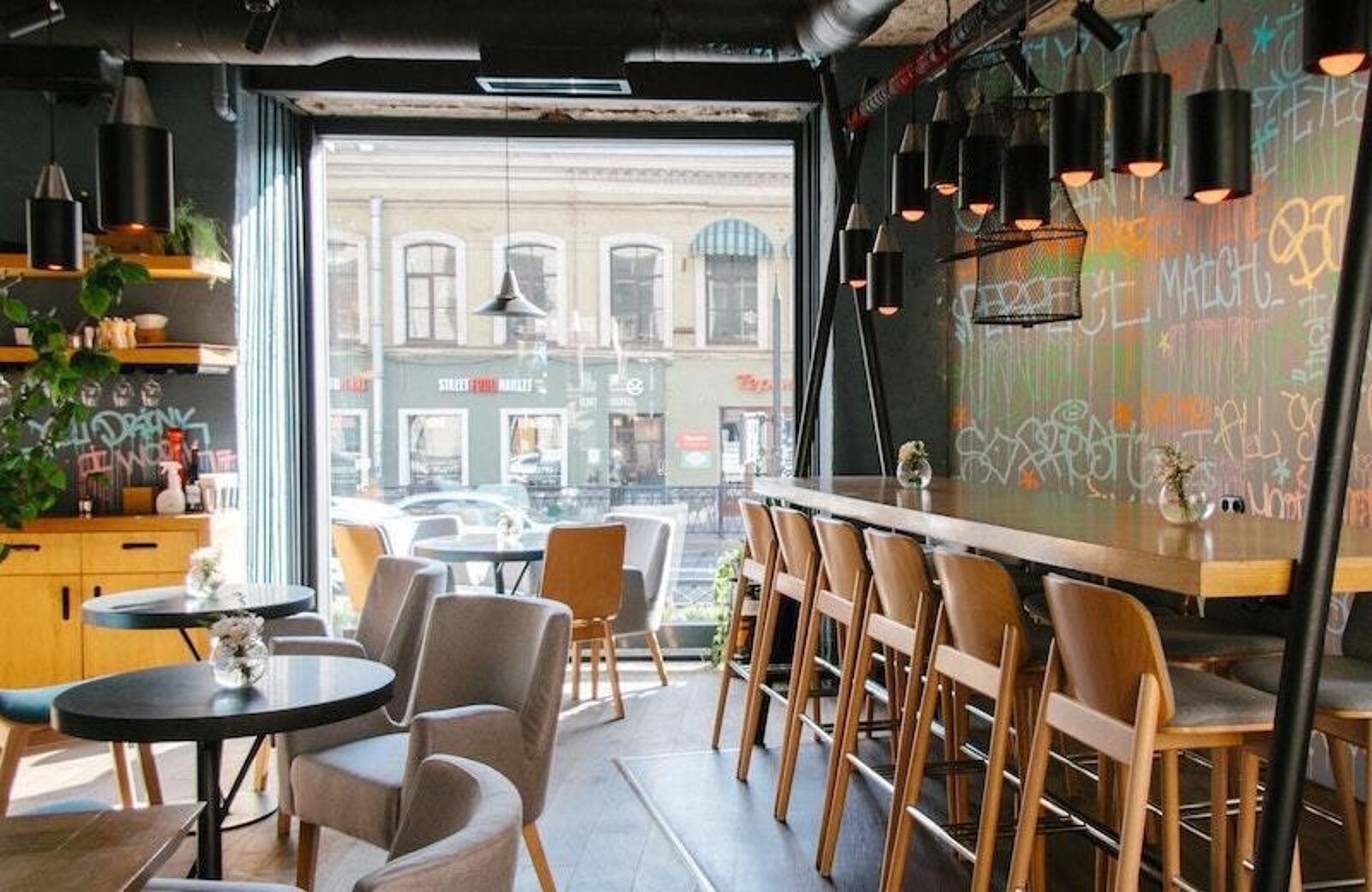
The Top 10 Cafe Menu Design Ideas (2024)
Looking to create or refresh your cafe menu? Check out these tips and examples to bring your ideas to life.

Justin GuinnAuthor


Restaurant Menu Templates
Use these menu templates as a starting point for your menu design or to give your menus a refresh.
Get free downloadCafes are a staple eatery. Whether it’s a bite, a meal, coffee, or tea, cafes are always there when you need them.
A successful cafe doesn’t just stick to the same old menu, though. Securing your cafe’s success relies on striking a balance between the classic, the innovative, and cost-effective. Your menu should have reliable and creative items that snag the attention of patrons, while also increasing your cafe’s profitability.
This may sound like quite the task. Don’t worry - we’ve put together this guide to create new menu ideas that will make your cafe stand out, while also helping it stay financially afloat.
Let’s discover how you can cook up new menu ideas for your cafe that lead to long-term success!
Engineer your cafe menu to balance popularity with profitability
Any new cafe menu ideas you create must balance popularity and creativity with costs and pricing. Of course, all these factors depend on your understanding of your market and what your target customers want — as well as knowing your and your teams’ culinary capabilities.
Here are a few ideas to help you strike the right balance for your new cafe menu ideas:
1. Take a look at your surroundings
The beauty of a cafe is in the seemingly endless options of themes you can choose from. You can pick a super-specific niche, like a Viennese coffee house. Or, you can come up with your own cafe identity. The choice is up to you!
When exploring all the potential themes for your cafe, you want to make sure that your cafe menu isn’t all over the place. That’s why it’s a great idea to add some kind of guardrails to your menu brainstorming sessions. One way to do this is to assess what’s working and what’s missing in your local culinary scene.
Perhaps there’s a lack of healthy options across all the cafes in your area. You could lean into that and test out some fresh, healthy menu items for your spot. On the flip side, if there are a ton of Greek cafes in your area, that must mean there’s a huge appetite for that cuisine. Your new cafe menu ideas can target that appetite, maybe even in a way your community hasn’t seen before.
2. Understand your costs
Your new cafe menu ideas — and existing ones — must strike the right profitability, regardless of your local surroundings.
You have to know your costs to hit your profit targets. Knowing your costs requires two things:
1. Calculate everything that goes into a recipe and onto a plate (this goes from ingredients to labor.)
2. Recording and updating ingredient price fluctuations with each new supplier order.
While many operators go straight to restaurant inventory management tools for this, the more logical place to start is with invoice processing automation. Your invoices are the single source of truth when it comes to ingredient prices. The ability to capture, digitize, and analyze these prices with each new invoice is critical for unlocking up-to-date recipe and plate costs.
Restaurant Cost Control Guide
Use this guide to learn more about your restaurant costs, how to track them, and steps you can take to help maximize your profitability.

3. Don’t be afraid to pivot
Fail fast is the motto of innovation across the technology space. The same is true of your menu ideas.
You want to take your time mastering your new ideas behind the scenes. However, once they hit the menu, don’t be afraid to declare them failures if no one is interested.
This is easier said than done, as there’s a sense of ownership and a special bond built between chef and plate. And, honestly, if the menu item doesn’t require new ingredients or tons of labor, then there’s no harm in letting it ride for a while. Just remember though - if you’re shipping in ingredients specifically for a new menu item that’s not selling, don’t be afraid to pivot until it hits the mark or just scrap the dish completely.
Remember - by no means does this make you a failure! It simply tells you that your patrons aren’t quite ready yet for the culinary fire you and your team are bringing to the table. So, don’t erase the recipe completely, as it could make a comeback in the future.
5 effective cafe menu design ideas, examples, and inspirations
Subtly can go a long way
Your new menu ideas don’t have to be revolutionary or require tons of new ingredients. Think about how you can use different combinations of ingredients you already have on hand to add a unique and sustainable new item to your menu.
Dive into a specific cuisine
Not all cafes are the same. It’s all really what you want to make it! So don’t be afraid to steer your cafe menu toward a specific regional cuisine — especially if it’s a cuisine that’s hard to find in your area.
Let rotating items provide cover for new ideas
Many cafes offer rotating soups, salads, and other specials. There’s an art to serving a dish one day and not the next. When mastered, it’s a great way to test new ideas. You can add your new cafe menu item to the rotation a few times and see how it sells.
Add a twist
On the theme of deconstruction, an excellent new menu idea could be a twist on an existing classic. This could work for salads, sandwiches, coffee drinks, or any menu item. If you go this route, be sure your staff has the item’s execution down pat, so that every customer has the same exciting experience with the new item.
Get the word out!
Once you go through all the work of creating new cafe menu ideas, it’s time to let the news out about your creations. Marketing your new menu items is the only way for them to find the most success, no matter how much time and energy you put into designing them. This all starts by getting the word out across all of your restaurant marketing channels — social media, email, and more.
Related Cafe Related Resources
Is this article helpful?
DISCLAIMER: This information is provided for general informational purposes only, and publication does not constitute an endorsement. Toast does not warrant the accuracy or completeness of any information, text, graphics, links, or other items contained within this content. Toast does not guarantee you will achieve any specific results if you follow any advice herein. It may be advisable for you to consult with a professional such as a lawyer, accountant, or business advisor for advice specific to your situation.
Read More
Subscribe to On the Line
Sign up to get industry intel, advice, tools, and honest takes from real people tackling their restaurants’ greatest challenges.



